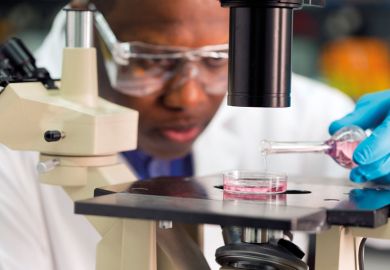Australia’s government has pledged to develop a 20-year national health and medical research strategy to tackle the waste from a fragmented funding system.
Health minister Greg Hunt told a Sydney gathering that theoretical and applied research funded at both the federal and state levels would be brought together under “a common vision and a common picture”.
Mr Hunt said he expected the “Vision 2040” strategy to be completed by the end of next year, coordinating efforts in frontier areas such as telehealth, genomics, precision medicine and stem cell science.
Addressing the annual awards night of Research Australia (RA), the national representative body for health and medical research, Mr Hunt said the sector was on the verge of regrowing kidneys, restoring lost spinal function and finding cures for diabetes and Parkinson’s disease. “It may be 10 years, it may be 15, maybe even 20,” he told guests.
“It’s…a question of how quickly we can get there. Our task…is to bring those treatments earlier to more Australians and more people around the world, just as you’ve done with the vaccine programme.”
The promise answers a call from RA, after it launched a consultation paper on post-pandemic opportunities for medical research and innovation. The paper says 20 national health and medical reviews over the past 15 years have generated more than 550 recommendations, many of them never implemented.
More than half of the reviews advocated an overarching strategy to tackle duplication of efforts in research funded by five separate federal government portfolios as well as state and territory governments, community organisations, philanthropists, businesses and private healthcare companies.
“Running multiple, uncoordinated streams of research adds to the administration costs for funders,” the paper says. “It is a disincentive for attracting funding from other sources.”
RA managing director Nadia Levin said Australia performed well on medical research, but could do better. “We have to strengthen the connection between research and healthcare as we move out of pandemic mode and into Covid normal,” she said.
“Now is the time to ensure that our research system matches the needs of our health system. It’s about creating economies of scale and using the energy generated from research as a collective.”
Mr Hunt intends to leave politics next year, and his government faces a looming election. Ms Levin said she expected work on the strategy to continue regardless of the election result. “It’s about great research, great health outcomes and great economic outcomes. It doesn’t really matter which party you’re from.”
Former chief medical officer Brendan Murphy, who claimed RA’s flagship Peter Wills Medal, said the pandemic response had demonstrated the sector’s potential. Australia had been one of the first countries to sequence the Covid-19 virus genome and to develop a polymerase chain reaction test, said Professor Murphy, who now heads the federal health department. “We will do our best to help strategise the next generation of medical research.”
Mr Hunt also announced that the government would develop the next 10-year plan for the A$20 billion (£10.8 billion) Medical Research Future Fund (MRFF) by March. And he flagged a new A$42 million MRFF allocation for early and mid-career medical researchers “to keep them, to inspire them, to retain them and to advance them”.
Register to continue
Why register?
- Registration is free and only takes a moment
- Once registered, you can read 3 articles a month
- Sign up for our newsletter
Subscribe
Or subscribe for unlimited access to:
- Unlimited access to news, views, insights & reviews
- Digital editions
- Digital access to THE’s university and college rankings analysis
Already registered or a current subscriber?








